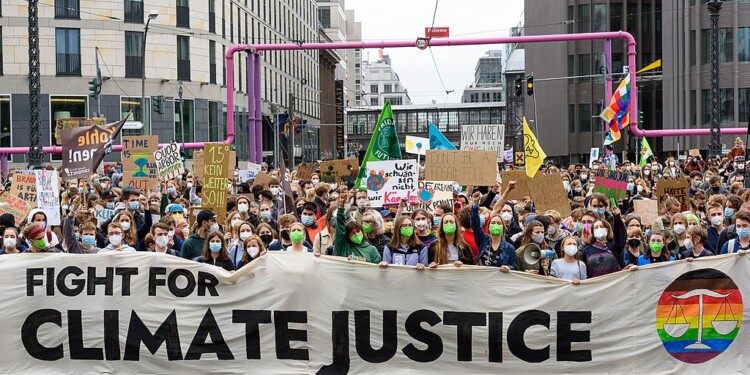Fridays For Future (FFF) is back. Today, on March 25, 2022, the organization is hosting more than 700 hundred protests worldwide. Of these, 204 in Canada and the US and 348 in Europe. The most represented countries are the US, Italy and Sweden ( respectively with 100, 76 and 47 demonstrations).
From major cities like New York, Paris or Tokyo, protests will also occur in some of the most remote and isolated places on earth, like the Canaries, the Cayman Islands or New Caledonia.
The theme of the protest will be #PeopleNotProfit, urging world leaders to enact climate reparations. Such reparations would be mainly political and not economic. The organizers demand a “transformative justice process in which political power will return to the people.” This process would entail a redistribution of decision-making prerogatives from the richest (and most influential) 1% of the world to the world at large, a class redistribution from top to bottom.
📢 ON MARCH 25TH, WE WILL STRIKE FOR CLIMATE REPARATIONS AND JUSTICE!📢
Join us for the Global Climate Strike as we demand policymakers and world leaders to prioritize #PeopleNotProfit!
Find out more: https://t.co/4vSZMw5LoT#FridaysForFuture
Design made by: @namevdelang pic.twitter.com/7RQPIXxhbP— Fridays For Future (@Fridays4future) January 25, 2022
Related articles: COP 26: Success or Failure?
An overview of Fridays For Future’s growth
FFF does not need any introduction, but maybe a review of some statistics related to the movement will help to remind us how successful the initiative has been so far.
Starting from August 2018, when Greta Thunberg, then 15-year-old, began a school strike in front of the Swedish parliament, the movement quickly grew to 2 million protesters in November strikes in 2019, taking place in more than 2400 cities and involving 157 countries.
Then Covid hit, and physical demonstrations lost popularity, as 2020 only saw two significant protests in April and September.
Protests regained traction in 2021, and the pre-covid levels were reached again in terms of the number of protests during the year (around 4/5), but the movement was never able to gather more than 1 million demonstrators in any of them.
This is not to say FFF is in crisis. The movement, mainly through its young leader Greta Thunberg, constitutes a social media powerhouse with almost 15 million followers. And whenever an international event related to climate occurs, media channels will always include Thunberg’s opinion on it, as it constitutes an indicator of the level of satisfaction (or dissatisfaction) of new generations with the latest developments.
And hers has been a dissatisfied voice, to say the least.
Activism, protests and decision-making
We analyzed how difficult it is to assess Cop 26 as either an unambiguous success or failure. Still, the fact that Thunberg considered it “a failure” a “PR event” is enough to convince millions that agreements reached are not sufficient, that protests need to be supported and strikes to continue until more adequate measures are implemented.
This fact is part of a more general trend by which decision-making in society is shifting from centralized, state-led control to a mediation effort between different societal interests represented by civil society, businesses and activists (with their followers).
If businesses impact reality and policy-making through adopting Corporate Social Responsibility and Corporate Shared values, remaining in an economic context, civil society and activists retain influence through their impact on people at large. For each youngster who joins a protest with FFF, one less citizen will settle for greenwashing or weak climate action, inducing politicians to act more directly to address the climate threat.
This is why looking at protests turnout and statements from activists is as essential as keeping up with parliamentary political debate and new economic policies.
In the new globalized world order in which we live, prospects for change can arise from almost anywhere and anyone. Even from a 15-year-old who decides to skip school to sit in front of the Swedish parliament holding a sign that reads: “Skolstrejk för klimatet”.
Many hundreds of thousands are holding similar banners today in her name.
Editor’s Note: The opinions expressed here by Impakter.com columnists are their own, not those of Impakter.com — In the Featured Photo: A Fridays For Future protest . Featured Photo Credit: Stephan Muller.










